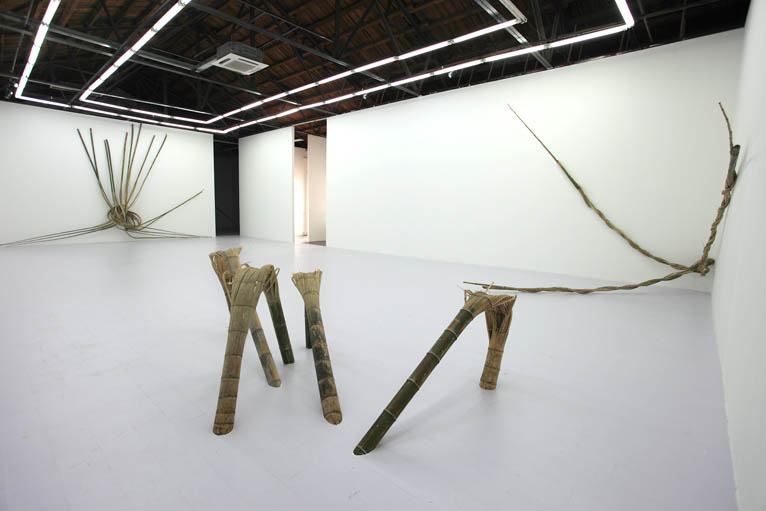XIAO YU: TURN AROUND
| August 1, 2010 | Post In LEAP 4

Since the 1990s, the unique characteristics of contemporary Chinese society and art have been the focus of a great number of artists and curators. There seem to have been an equal number of critics who have pointed out that this type of creation and exhibition is exceedingly simple, spiritually one with traditional realism. In the last two years, it would seem that certain exhibitions at Beijing Commune have strived to promote the development of a new and different aesthetic form, essentially vindicating critics’ hopes for the future of contemporary Chinese art. Xiao Yu’s recent solo exhibition “Turn Around” is one of these. For many, Xiao’s reputation is colored by early works that took human and animal bodies as both theme and material, making him a stand-in for a whole generation of artists who were seen as competing to be the cruelest and the coolest. The core of his work resides in his testing the limits of social realities and ethics. This exhibition leaves us with no choice but to regard him from a different perspective.
“Turn Around” uses a large amount of the most characteristically Chinese of materials, bamboo. The bamboo has been twisted and bent into a variety of high-tensile shapes, then arranged on pure white floors and walls designed and decorated with utmost sophistication. In and of itself, bamboo is strong and full of character, and has been a favorite subject of Chinese artists since the Song Dynasty. Zheng Banqiao (1693-1765) wrote a poem about bamboo: “Clutching the mountain with no intent to let go / Rooted in broken rock. / Still strong despite a thousand strikes. / Enduring the wind from all directions.”
The poem aims to demonstrate the flexibility of bamboo. In his new work, Xiao Yu has used human force to bend bamboo to the exact point where it can only snap or bounce back. In the exhibition space, he has left the bamboo like this, in a more or less permanent state. Once the force that bent it increases, snapping is inevitable. Once that force is gone, the bamboo will “turn around” and return to it original state, hence the phrase, “turn around.” This is how Xiao comprehends the material and its flexibility, and how he turned this conceptual understanding into the theme of his exhibition. Furthermore, this exhibition is also a turning point for the artist himself. As we mentioned before, the theme “turn around” also signifies the artist’s return to aesthetics, from the social themes and issues he has customarily addressed.
In the current low-carbon push to create “Better City, Better Life,” bamboo has come back into vogue. Bamboo is by no means a new material to contemporary art in China, although works incorporating it have usually played symbolically on its Chineseness. Especially when exhibited abroad, these works tend to exaggerate the value and sense of personification that Chinese traditional culture attached to bamboo. Consequently, countless people have fallen into a cunning trap of Chinese contemporary art: that “Chinese symbols” cannot only be represented by images, but also by materials. In the process of Chinese art’s transformation into three dimensions—into new materials—the idea of symbolic representation still holds sway.
Since the 1980s, this kind of symbolism has been very common in installation work. But as creative theme and creative object, where is the actual character of a material to be found? This is a question that Chinese contemporary art should ask itself, and indeed has asked itself in rare experimental moments over the last decade and a half. In his 1996 piece Kill, for example, Sui Jianguo repeatedly hammered nails into a rubber conveyor belt until the originally flexible nature of rubber gave way to the steely hardness of an iron board. Although Sui’s work departed from the concept of sculpture and therefore differs from Xiao Yu’s “Turn Around,” the two are similar in the importance they attach to the individual characteristics of materials, and in their explorations of the concepts and meanings that arise from these materials. Such interventions deserve the consideration of artists and critics. Sheng Wei

